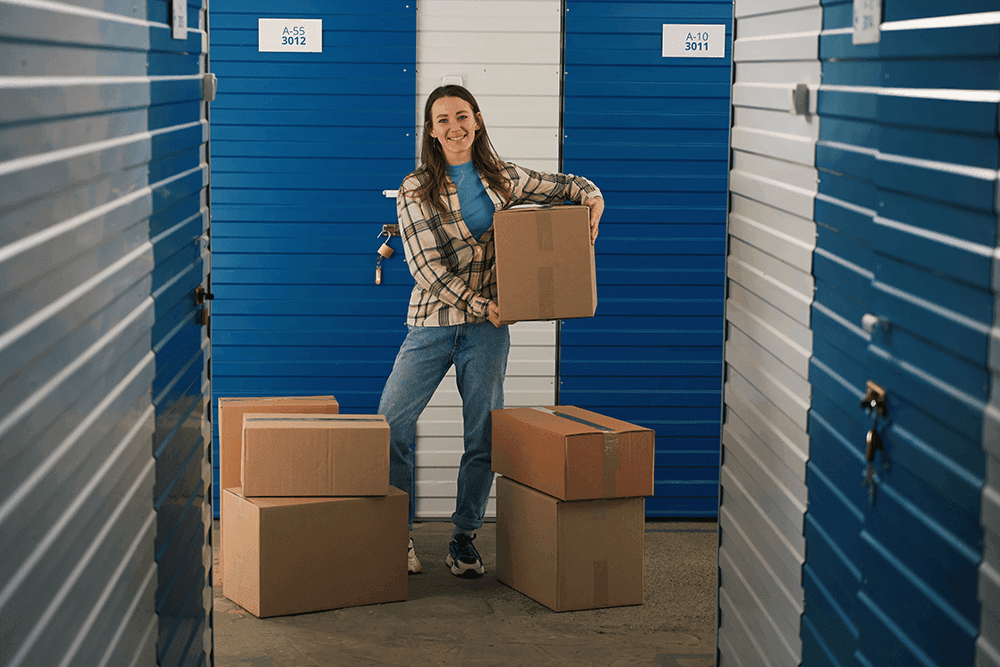
 Storage Tips
Storage TipsHow to Prepare Leather for Long Term Storage
Leather is very tough; however, it can suffer damage if it is not stored properly. Damage may come in the form of the leather cracking due to extreme temperature variation. Another problem is the formation of mold and mildew on the leather, which can ruin it.
This guide gives some helpful tips about how to store leather items including furniture, clothing, and accessories.
Climate-Controlled Storage for Leather
The first tip is the easiest one. Be sure to choose a self-storage unit that is climate controlled. Climate control includes both temperature control and humidity control. Leather items that are prepared properly for long-term storage do well in environments that are cool with low humidity but not too dry.
It is a good idea to invest in a simple thermometer with a hydrometer (measures humidity) for a storage unit. Hang this measurement device on a wall in the storage unit away from other things so that it gets a good reading of the air. To get an accurate reading, check the readings for the storage unit after the door has been closed for at least a half hour.
Desirable Temperature and Humidity for Leather Storage
The best temperature range for leather storage is 60 to 70 degrees Fahrenheit, with 76degF being nearly perfect. Leather will crack if it gets too dry and mold or mildew may form if the humidity is too high.
In areas that have high humidity, climate control is achieved by the facility using a dehumidifier system to keep the relative humidity in the storage unit around 50 to 70 percent with 55% being nearly perfect. Since leather does reasonably well when absorbing water, higher humidity is less damaging than lower humidity. Nevertheless, the relative humidity should not exceed 70% to be safe.
In some very dry areas, a humidifier system may be necessary to add water to the air in order to bring the humidity up to this level. Well-maintained, climate-controlled storage units will achieve this minimum 50% relative humidity level on a facility-wide basis.
If low humidity is a problem, and the facility does not have a system in place to address this issue, another way to add water to the air in dry locations is to have open containers of water placed in different parts of the storage unit. Natural evaporation of the water will increase the humidity. This is not a very accurate system but better than doing nothing. It requires refilling the water containers on a regular basis. It does work somewhat. Measure the humidity to see if the level is in a good range after the door has been closed for at least a half hour. If necessary, add water containers until the humidity level improves.
Preparing Leather Furniture for Long Term Storage
Here is a list of steps to take to prepare leather furniture for long-term storage:
- Clean: Thoroughly clean leather furniture. Vacuum off the dirt and dust. Then, use a soft cloth with a leather cleaning product. Before using it on the full piece, test the leather cleaning product on a place that is not visible in order to make sure the cleaner does not cause discoloration.
- Treat: Treat the leather with a conditioner that will help protect it while it is in storage from mold and mildew formation.
- Protect: Cover the furniture with soft blankets or furniture pads when it is being transported in the moving truck to the storage unit. This helps prevent scratches and other possible damage caused during transport.
- Placement: When putting the furniture in the storage unit may sure to place it in areas where it will not be right next to other things (leave an inch of space around it). Do not stack other things on top of it. A letter sofa can be stored upright to conserve storage space. If you do this, put some clean cardboard on a pallet to raise it off the floor so that the sofa is not in direct contact with the storage unit floor or wall. Avoid placing leather furniture near paints or toxic chemicals that may cause damage to the furniture from fumes that might evaporate.
Preparing Leather Clothes and Accessories for Long Term Storage
- Paper, Not Plastic: Store leather clothing by taking it off hangers. Do not fold it. Instead, use archive tissue paper (acid-free) to stuff the pant legs, sleeves, and shoulders. Then, gently wrap it with clean dark-colored paper. Never store leather clothing in plastic because it cannot breathe properly and this may cause mold and mildew to form, which may create unrepairable permanent damage to the leather.
- Roll Flat Leather on Cardboard Tubes: Flat leather pieces such as wall hangings or throw rugs should never be folded. Instead, they can be rolled around cardboard tubes outside out.
- Separate: Use cardboard between different types of leather and colored leather than might bleed color. Avoid using storage containers because they can trap moisture.
By following these steps and storing valuable leather goods in a climate-controlled storage unit, you will likely have a better result and reduce the chance of any damage.
We're Your Storage Solution!
Storage Rentals of America is your convenient self-storage solution. So come into our office or give our storage experts a call at 1-800-457-5678. Our call center is available 7 days a week and can help determine which storage unit size best fits your storage needs.



